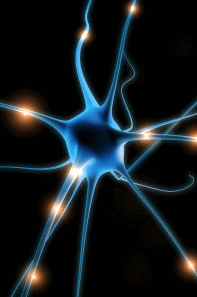 Electrodiagnostic testing is a useful adjunct to clinical evaluation because they assist the doctor in clarifying a diagnosis, evaluating for concomitant conditions, arguing for or against an alternative diagnosis, and quantifying the severity of the patient’s condition.
Electrodiagnostic testing is a useful adjunct to clinical evaluation because they assist the doctor in clarifying a diagnosis, evaluating for concomitant conditions, arguing for or against an alternative diagnosis, and quantifying the severity of the patient’s condition.
NCS/nEMG help localize a lesion (neuro/myo). It characterizes a lesion by fiber type (sensory/motor/mixed), pathology (axonal, demyelinating), and temporal course (acute/chronic). Moreover, electrodiagnostic testing objectively documents a suspected lesion and helps determine prognosis.
The EMG Lab in Livingston is open Tuesday mornings. Monday and Thursday by appointment.
Independent consults and testing also available by appointment.
For testing in NY Contact Me
A Typical Study:
- Bilateral evaluation compares symptomatic v asymptomatic side to avoid over diagnosising and mis-diagnosing.
- A sampling of motor and sensory nerves from each limb based on symptomatology
- Two (2) Motor Nerve Conduction w. F-waves
- Three (3) Sensory Nerve Conduction
- H-reflex. Electrodiagnostic equivalent of a muscle stretch reflex.
- Two (2) limb Needle EMG (muscle selection based on patient presentation)
- Paraspinal EMG as needed
- Additional nerves/testing as needed based on patient presentation.
- Duration ~ 20 minutes
EMG Basics:
An EMG encompass two separate diagnostic aspects: nerve conduction and electromyography. Each aspect compliments the other, answering important diagnostic questions. For this reason, the test is not designed to be done separately. In some instances, nerve conduction or electromyography may be done alone though it is not generally advisable.
Electrodiagnostic evaluation is best suited for those patients with persistent complaints of skin disturbances (parasthesia/dysesthia/anesthesia), muscle weakness or cramping, radiating pain and/or limb pain with or without spinal pain that have had minimal to no response with conservative treatment.
NCS (Nerve Conduction Studies) measure the integrity and patency of major peripheral nerves. These investigate distal peripheral lesions although combined with late responses (F-waves, H-Reflex) NCS provides general–unlocalized–feedback on proximal nerves.
nEMG (needle electromyography) provides insight into the electrical stability of muscle fibers and helps determine the precise nerve root involvement of a radicular lesion or qualify axonal degeneration in a peripheral neuropathic lesion. It differentiates neurogenic/myogenic causes of pain and distinguishes acute from chronic cases.
Before the Test.
The ordering doctor should provide an electrically quiet room (one with the least amount of electrical devices preferably with no overhead fan or vent).
Patient should be instructed to avoid using oils/lotions on the area being tested.
The doctor should provide patients with a basic explanation of the exam and what information he hopes to discover.
